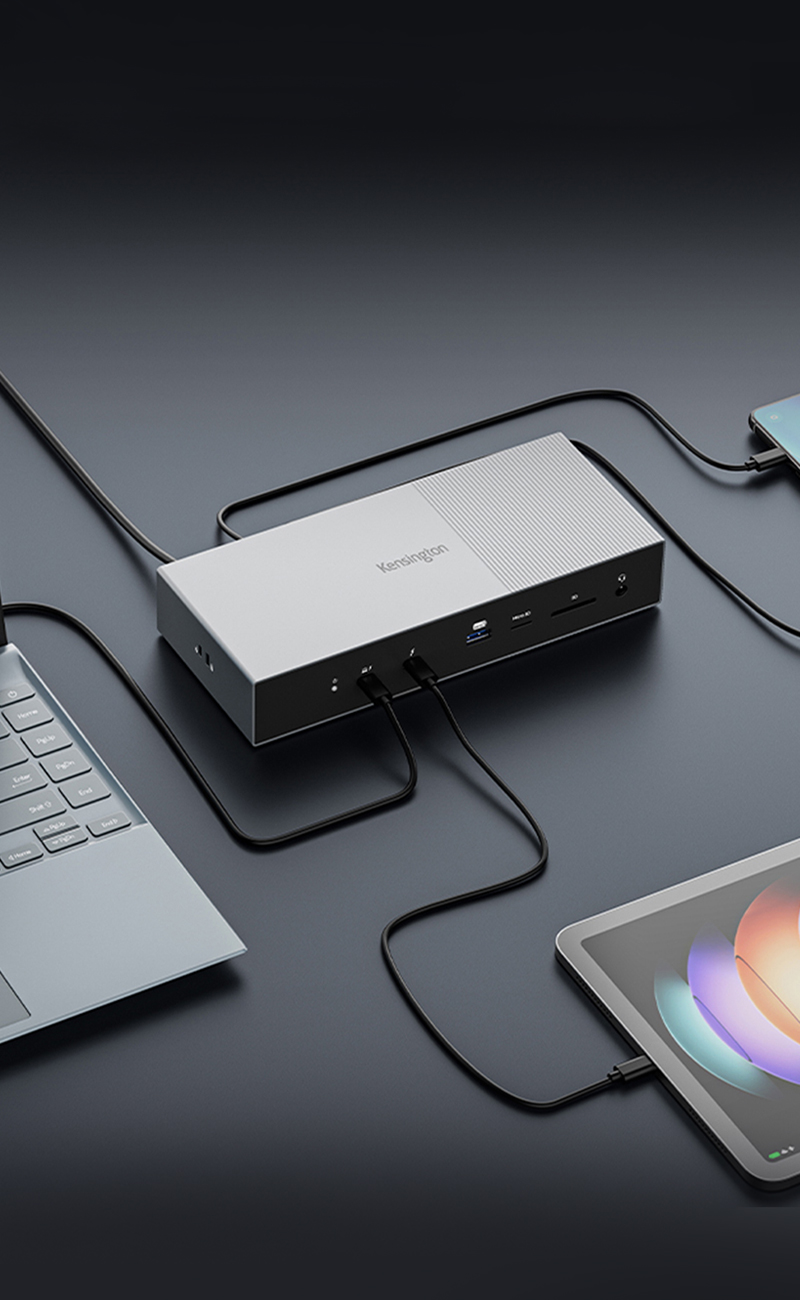
In today’s rapidly evolving tech landscape, the term "Universal Docking" has lost its clarity, causing confusion for end users seeking reliable connectivity solutions. That’s why Synaptics is revolutionizing the conversation around display technology with the term "GPU Agnostic Docking." This fresh terminology emphasizes flexibility and compatibility, addressing the dynamic needs of both businesses and individual users.
- What is GPU Agnostic Docking?
- Why Choose DisplayLink® Technology?
- DisplayLink® Docking Station for M4 Chipsets: Up to Quad Display and Open Lid Support
What is GPU Agnostic Docking?
Unlike traditional GPU-dependent technologies that necessitate specific hardware upgrades, DisplayLink® technology is truly GPU agnostic. This means it delivers powerful multi-display capabilities without relying on specific GPU requirements. Synaptics announced a DL-7000 Series solution that can drive up to four 4K displays from a single chip. By adding a DL-5000 or 6000 Series adapter , you can effortlessly expand your display setup, unlocking even more possibilities.
Why Choose DisplayLink® Technology?
With DisplayLink®, the worries surrounding your notebook's existing GPU are a thing of the past. Easily connect multiple 4K displays to enhance productivity and create versatile workspaces without needing the latest GPU hardware. This adaptability not only extends the return on investment for IT but also aligns with sustainability goals. Compatible with various operating systems—Windows, macOS, and Chrome OS—DisplayLink® can even enable older laptops using USB-A or USB-C® without DisplayPort™ Alt Mode to transmit video. The SD4782P EQ USB-C® & USB-A Dual 4K Docking Station is ideal for legacy laptops, supporting dual displays.
Additionally, DisplayLink® technology overcomes limitations imposed by certain OS platforms. For instance, many MacBook Air models with M1/M2 chipsets support only a single external display; with the M3 chipsets, users must close the laptop lid to use dual displays. DisplayLink® provides a seamless solution to these challenges.
DisplayLink® Docking Station for M4 Chipsets: Enables up to four displays by adding two additional displays to your MacBook's capabilities.
For MacBook models with M4 chipsets, Kensington’s DisplayLink® docking stations offer a convenient solution for achieving up to four external displays using the SD5900T. This enables quad-display functionality for M4 base chipsets, as well as the more advanced M4 Pro and Max chipsets, which mirror the capabilities of the M1/M2 Pro and Max models. Check your MacBook's capabilities: Previous M3 base chipsets support two external displays when the laptop lid is closed and one external display with the lid open. With the DisplayLink® solution, you can add two additional displays. In this case, with M3 base chipsets, you can achieve up to four displays when the lid is closed and up to three displays when the lid is open.
Many MacBook users with M1 and M2 chipsets have experienced limitations with single display setups. However, with a DisplayLink® dock like the SD4790P EQ USB-C® and USB-A 10Gbps Quad 4K Hybrid Dock, you can connect up to three external displays while keeping your MacBook's screen active as an additional workspace. This setup allows you to use the laptop screen as Screen A and the three external displays as Screens B, C, and D.

Kensington docks extend monitor support for Apple M processors.
Table summarizing extended monitor support for Apple M processors with Kensington docks. M1/M2 base MacBooks support a single display with USB-C docks like the SD4842P. The SD4790P USB-C dock with DisplayLink software supports up to three displays after the driver is installed. Thunderbolt™ 4 docks like the SD5760T and Thunderbolt™ 5 docks like the SD5000T5 support up to two displays via the dock. The SD5900T Thunderbolt™ 4 dock with DisplayLink software can support up to four displays after the driver is installed. The SD4782P dock supports dual displays with software for any MacBook model. MacBooks with M3 base chipsets can support dual displays with Thunderbolt™ docks when the lid is closed. The latest M4 base, M4 Pro, and M4 Max MacBooks can support dual displays when the lid is open using Thunderbolt™ 4 or Thunderbolt™ 5 docks. Data transfer speeds of docking stations from highest to lowest are as follows: Thunderbolt™ 5 offers up to 80Gbps bidirectional and up to 120Gbps for video-focused tasks, Thunderbolt™ 4 supports up to 40Gbps bidirectional, and USB-C docks offer up to 10Gbps bidirectional. Note: Thunderbolt™ 5 docks require a Thunderbolt™ 5 laptop to achieve the maximum Thunderbolt™ 5 transfer speeds. M3/M4 Max chipsets can support up to four external displays. However, the number of displays supported via a dock is limited to two external displays. Users may consider connecting additional monitors directly to the MacBook itself.
What’s Next?
Kensington is committed to innovation, offering a range of docking stations powered by DisplayLink® technology. The recently launched SD5900T docking station combines Thunderbolt™ 4 technology with DisplayLink®, enabling users to enjoy 40Gbps data transfer bandwidth while supporting up to four displays. It supports up to quad 4K @ 60Hz for the M4 base and MacBook models with M1/M2/M3/M4 Pro and Max chipsets, as well as the M3 base chipset when the laptop lid is closed. Additionally, it supports up to triple 4K @ 60Hz for base M1 and M2 chipsets. The docking station features two Thunderbolt™ downstream ports and one DisplayPort™ port for plug-and-play video. Two HDMI®/DisplayPort™ options are available with DisplayLink®, making it an ideal dock for MacBooks to expand your visual workspace and boost productivity. Since introducing its first USB 2.0 dock in 2006, Kensington has been a trusted partner of Synaptics' DisplayLink®, making multiple displays a seamless reality. As a leader in docking solutions, Kensington will continue to adapt and innovate in response to emerging technologies.
Explore Kensington’s docking stations with DisplayLink® technology
Frequently Asked Questions About DisplayLink® Technology
